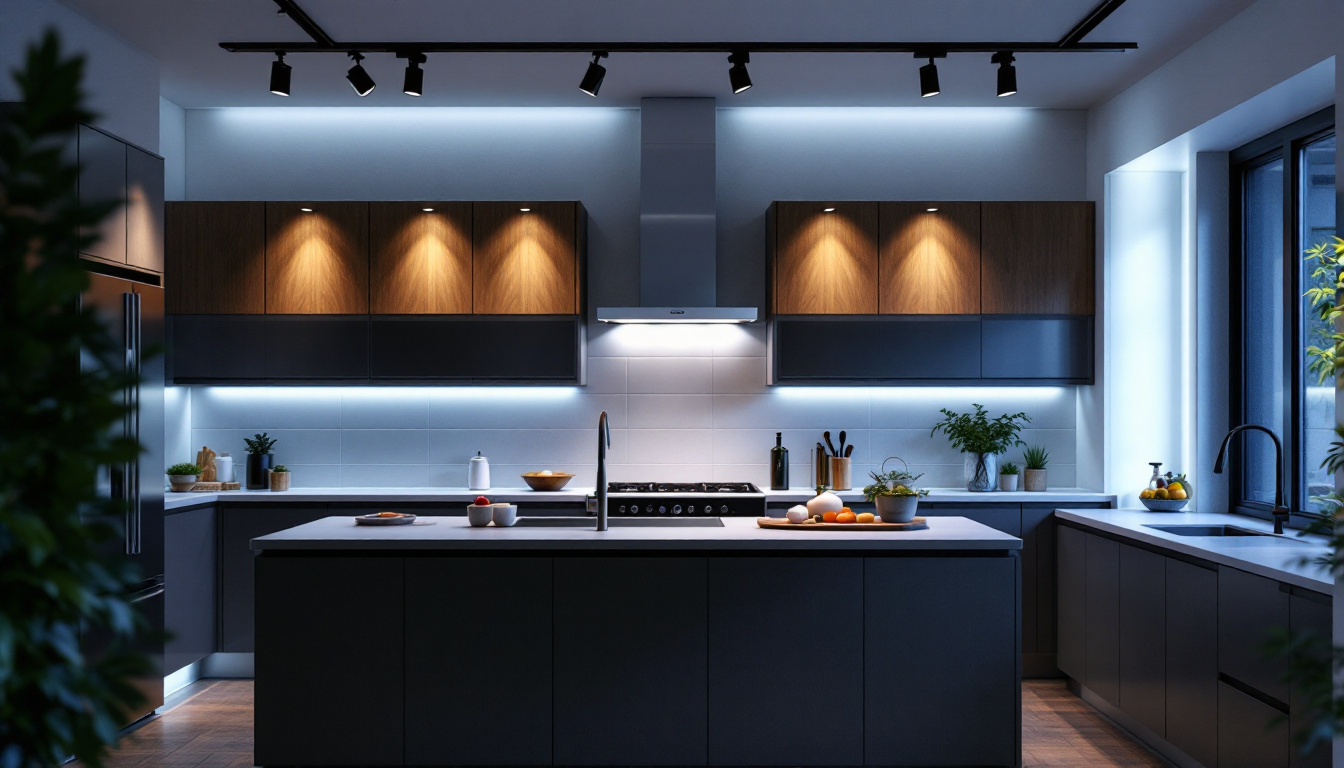
Lighting is an essential aspect of any commercial space, influencing not only aesthetics but also functionality and energy efficiency. For lighting contractors, understanding commercial lighting control systems is crucial for delivering optimal solutions to clients. This article explores proven methods that can enhance the effectiveness of lighting control systems, ensuring that contractors can meet the diverse needs of their customers.
Commercial lighting control systems are designed to manage light levels in various environments, from retail spaces to office buildings. These systems can range from simple manual controls to sophisticated automated solutions that adjust lighting based on occupancy and natural light levels. The primary goal is to create a comfortable atmosphere while minimizing energy consumption. In addition to energy savings, these systems can also enhance the aesthetic appeal of a space, allowing businesses to create inviting atmospheres that attract customers and improve employee productivity.
By implementing the right control systems, contractors can help clients achieve significant energy savings, enhance the user experience, and comply with building codes and regulations. Understanding the various components and technologies involved is essential for any contractor looking to excel in this field. Furthermore, as sustainability becomes a priority for many organizations, the integration of advanced lighting control systems can play a crucial role in achieving corporate sustainability goals, showcasing a commitment to responsible energy use and environmental stewardship.
Lighting control systems consist of several key components that work together to provide seamless control over lighting. These include sensors, controllers, and user interfaces. Sensors detect occupancy and ambient light levels, while controllers manage the lighting fixtures based on the data received. User interfaces allow occupants to manually adjust lighting settings as needed. In addition to these core components, communication protocols such as Zigbee or DALI (Digital Addressable Lighting Interface) are often employed to facilitate the interaction between devices, ensuring that the system operates efficiently and reliably.
Incorporating these components effectively can lead to a more responsive and efficient lighting system. For instance, occupancy sensors can automatically turn lights off in unoccupied spaces, while daylight sensors can dim or brighten lights based on the amount of natural light available. Understanding how these components interact is vital for contractors aiming to design and implement effective lighting solutions. Moreover, the integration of smart technology, such as mobile applications and voice-activated controls, is becoming increasingly popular, allowing users to personalize their lighting experience and adapt it to their specific needs and preferences.
There are several types of lighting control systems available, each with its own advantages and applications. Some common types include standalone systems, networked systems, and integrated systems. Standalone systems are simpler and often used in smaller spaces, while networked systems allow for centralized control across larger areas. These networked systems can be particularly beneficial in environments such as schools or hospitals, where consistent lighting management is critical for safety and comfort.
Integrated systems combine lighting control with other building management systems, such as HVAC and security. This approach not only enhances energy efficiency but also improves overall building functionality. For instance, an integrated system can adjust lighting based on HVAC settings, ensuring that energy is not wasted when a room is not in use. Contractors should be familiar with these various types to recommend the best solution based on the specific needs of their clients. Additionally, staying updated on emerging technologies, such as IoT-enabled devices and AI-driven analytics, can provide contractors with a competitive edge in delivering innovative lighting solutions that meet the evolving demands of modern commercial spaces.
Implementing effective lighting control systems offers numerous benefits that can significantly enhance the value of a commercial space. Beyond energy savings, these systems can improve the overall user experience, increase productivity, and contribute to sustainability efforts.
For lighting contractors, understanding these benefits is crucial for convincing clients of the value of investing in advanced lighting control solutions. By highlighting these advantages, contractors can foster stronger relationships with clients and position themselves as knowledgeable experts in the field.
One of the most significant advantages of lighting control systems is their ability to improve energy efficiency. By automatically adjusting light levels based on occupancy and daylight availability, these systems can reduce energy consumption significantly. This not only lowers utility bills for clients but also supports sustainability initiatives.
In many cases, energy-efficient lighting solutions can qualify for rebates and incentives, further enhancing their appeal. Contractors should be well-versed in the potential financial benefits of these systems, as they can be a powerful selling point when discussing projects with clients.
Lighting plays a crucial role in shaping the user experience within commercial spaces. Properly designed lighting control systems can create a more comfortable and inviting atmosphere, which can lead to increased customer satisfaction and employee productivity. For example, adjustable lighting levels can accommodate various activities, from focused work to relaxation.
Contractors should consider the specific needs of the space and its occupants when designing lighting solutions. By tailoring the lighting experience to the preferences of users, contractors can create environments that foster engagement and well-being.
Compliance with local building codes and safety regulations is a critical consideration for any commercial project. Lighting control systems can help ensure that spaces meet these requirements by providing adequate illumination levels and enabling emergency lighting features. For instance, automatic lighting controls can be integrated with emergency systems to ensure that exit paths are illuminated during power outages.
By staying informed about relevant regulations, contractors can help clients avoid potential fines and ensure that their spaces are safe for occupants. This knowledge not only enhances the contractor’s credibility but also reinforces the importance of proper lighting design.
Successfully implementing lighting control systems requires careful planning and execution. Contractors must consider various factors, including the specific needs of the space, the preferences of occupants, and the available technologies. Here are some proven strategies that can help contractors achieve successful outcomes.
Before designing a lighting control system, it is essential to conduct a thorough needs assessment. This involves understanding the specific requirements of the space, the activities that will take place, and the preferences of the occupants. Engaging with clients and end-users can provide valuable insights that inform the design process.
By gathering this information, contractors can create tailored lighting solutions that meet the unique needs of each project. This personalized approach not only enhances the effectiveness of the lighting system but also fosters a sense of collaboration and trust between the contractor and the client.
The technology landscape for lighting control systems is continually evolving, with new innovations emerging regularly. Contractors should stay informed about the latest advancements and be prepared to recommend solutions that align with their clients’ needs. Factors to consider include compatibility with existing systems, ease of use, and scalability for future expansion.
In addition, contractors should evaluate the reliability and support offered by manufacturers. Selecting high-quality products from reputable suppliers can ensure that the lighting control systems operate effectively and provide long-term value to clients.
Once a lighting control system has been installed, providing training and support for end-users is crucial for ensuring its successful operation. This may involve conducting training sessions to demonstrate how to use the system effectively, as well as offering ongoing support for any questions or issues that arise.
By empowering clients and users with the knowledge and skills to operate their lighting systems, contractors can enhance overall satisfaction and promote the long-term success of the project. Providing this level of service can also differentiate contractors in a competitive market, positioning them as trusted partners in the lighting industry.
The field of lighting control systems is constantly evolving, driven by advancements in technology and changing user preferences. Contractors must stay ahead of these trends to remain competitive and provide the best possible solutions for their clients. Here are some emerging trends that are shaping the future of commercial lighting control systems.
As smart building technologies continue to gain traction, lighting control systems are increasingly being integrated with other building management systems. This integration allows for more comprehensive control and monitoring of energy use, enhancing overall efficiency and performance.
Contractors should familiarize themselves with smart building concepts and explore how lighting control systems can be incorporated into broader building management strategies. This knowledge can open new opportunities for contractors to provide value-added services and position themselves as leaders in the industry.
The trend toward user-centric design is gaining momentum in the lighting industry. This approach emphasizes the importance of understanding user needs and preferences when designing lighting control systems. By prioritizing user experience, contractors can create solutions that enhance comfort, productivity, and satisfaction.
Contractors should engage with clients and end-users throughout the design process, gathering feedback and insights that can inform their decisions. This collaborative approach can lead to more successful outcomes and stronger relationships with clients.
Sustainability is becoming a key consideration for many businesses, and lighting control systems play a vital role in achieving energy efficiency and reducing environmental impact. As awareness of climate change and resource conservation grows, contractors must be prepared to offer solutions that align with these values.
By promoting energy-efficient lighting control systems and highlighting their benefits, contractors can help clients meet their sustainability goals while also enhancing the overall performance of their spaces. This focus on sustainability can differentiate contractors in a crowded market and attract clients who prioritize environmentally responsible practices.
Commercial lighting control systems are essential tools for lighting contractors looking to provide effective and efficient solutions for their clients. By understanding the components, benefits, and strategies for implementing these systems, contractors can enhance their service offerings and deliver exceptional value.
As the industry continues to evolve, staying informed about emerging trends and technologies will be crucial for success. By embracing innovation and prioritizing user needs, contractors can position themselves as leaders in the field and contribute to the creation of sustainable, user-friendly commercial spaces.
Ready to elevate your lighting projects with the latest commercial lighting control systems? Look no further than LumenWholesale for all your lighting needs. We provide contractors with high-quality, specification-grade lighting products at unbeatable wholesale prices, ensuring you get the best value for your investment. With our direct approach, you’ll enjoy superior products without the extra markups, and our commitment to quality means you can trust in the reliability and performance of every item we offer. Plus, with free shipping on bulk orders, you can stock up on the lighting solutions you need without worrying about hidden fees. Don’t compromise on quality or cost. Wholesale Lighting at the Best Value is just a click away with LumenWholesale.

Illuminate your understanding of covered patio string lights and their vital role for lighting contractors.

Discover why LED compatibility with dimmer switches is crucial for lighting contractors.

Discover the transformative impact of under-the-counter LED lights on the lighting industry.

Discover essential tips and innovative strategies for lighting contractors to master kitchen track lighting.